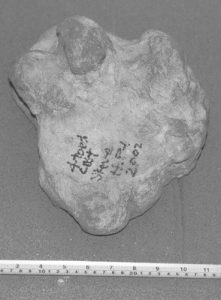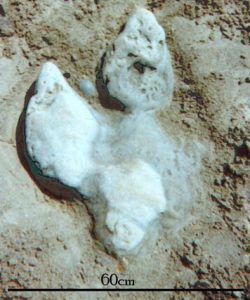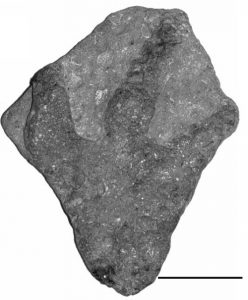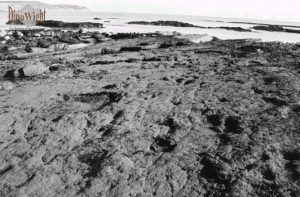




Ichnotaxa
- Grallator
- Anomoepus
- Eubrontes
- Iguanodon
- Tetrapodichnus
- Brontopodus
Please note, these are the names of the tracks, not the dinosaurs that made them.
Length
10 cm – 90 cm (4 inches – 3 feet)
Locations
In the field, the only really good place to see dinosaur footprints is Hanover Point, on the southwest coast. The best time to see the footprints is after a storm, as the ones that have been buried will be uncovered, and more will be washed out, although if there has been a collapse of the cliff then they may be obscured.
As I’ve said before, the National Trust protects these footprints, so please leave them where you find them. Teachers often use these footprints for field demonstrations, and everybody uses Hanover Point, from Dinosaur Expedition Centre to the University of Portsmouth
There are three main types of footprints known on the Isle of Wight, the Large “Iguanodon” tracks from the Wessex Formation and the base of the Vectis, slightly smaller “Theropod” footprints from thin limestone beds in the Vectis Formation, and four-toed “Polacanthus” tracks from the Wessex Formation. There are also some reported “Iguanodon” manus prints and sauropod tracks. Of all of these, the “Iguanodon” tracks are the easiest to find, due to their unusual shape.
Footcasts of the Wessex Formation are generally trifid (three pronged) boulders, about 50 cm long with an average angle of 42° between digits II and IV, preserved in sandstone overlying a mudstone substrate. There are also imprints, in a reddish-orange mudstone bed on the foreshore at Hanover Point. These were buried under the overlying mudstone beds, which have since been eroded away. There were also several trackways at Chilton Chine, but dinotrackers beware, they’ve eroded away since the 1970’s, and there is nothing left.
In the Vectis Formation, there are many sandstone-preserved footcasts, of both “ornithopod/theropod” and “sauropod” dinosaurs, in the White Rock Sandstone, but there are also footprints preserved in shelly limestone beds, the footprints being infilled with unionid bivalves (Radley et al., 1998). The preservation of the unionids would suggest that the tracks were made in the substrate, then the bivalves settled on the surface (Radley et al., 1998). Many of these footcasts, attributed to theropods, have what appears to be a claw impression at the tips of the digits (Radley et al., 1998); whether these are actual claw marks or artefacts of the substrate after the foot was removed is unknown.
GOLDRING, R., POLLARD, J. E and RADLEY, J. D. 2005.Trace fossils and pseudofossils from the Wealden strata (non-marine Lower Cretaceous) of southern England. Cretaceous Research, In Press
RADLEY, J. D., BARKER, M. J. and HARDING, I. C. 1998. Palaeoenvironment and taphonomy of dinosaur tracks in the Vectis Formation (Lower Cretaceous) of the Wessex sub-basin, southern England. Cretaceous Research, 19, 471-487.
WRIGHT, J. L. 1996. Fossil terrestrial trackways: function, taphonomy and palaeoecological significance (unpublished PhD thesis). Department of Geology, University of Bristol.
